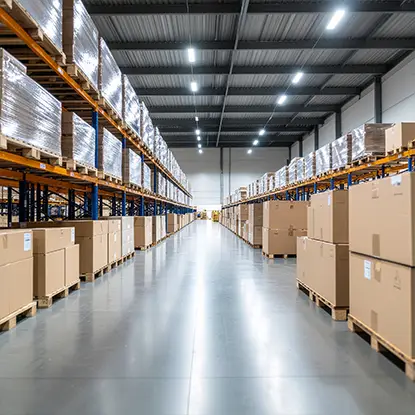How IP Location Powers Fraud Detection - And Where It Falls Short


Published: October 07, 2025
Fraud today has become increasingly sophisticated, often leaving companies struggling to keep up with new digital tactics. One of the most reliable signals used to detect suspicious activity online is IP location data. Every device that connects to the internet carries an IP address, a digital identifier that reveals approximate geographic information. By studying these locations, fraud detection systems can flag irregular behavior, trace malicious patterns, and reduce financial losses.

Explore how the docAlpha Intelligent Process Automation (IPA) platform revolutionizes operations by seamlessly combining data capture, automation, and workflow orchestration in one unified solution.
In this article, we will explore how IP location powers fraud detection, where it falls short, and why combining it with accurate geolocation tools such as GEOfinder can make online verification smarter, faster, and more precise.
Recommended reading: How Tools and Technology Are Transforming Business Workflows
IP location has long been the first step in identifying suspicious users. When a person logs into a financial account or completes a payment, the system records their IP address. This information includes the user’s country, city, and internet provider. If that data suddenly changes - for example, from London to Bangkok within minutes - automated systems recognize it as potentially fraudulent activity.
Organizations use IP tracking to build behavioral baselines. For instance, a user who always logs in from one country but suddenly appears on a different continent might trigger a security alert. Companies also analyze IP data to block known high-risk regions, detect VPN or proxy usage, and support compliance procedures that verify a user’s origin.
Businesses such as banks, online marketplaces, and subscription platforms have found IP location especially effective for early fraud screening. It acts as a gatekeeper, identifying irregularities before transactions are finalized. However, it is only one part of a much larger system of verification.
Elevate Your AP Workflow With AI-Powered Automation
Take your accounts payable operations to the next level with intelligent automation. InvoiceAction uses AI and configurable business rules to drive end-to-end efficiency, helping your team shift from manual
tasks to strategic growth.
Book a demo now
At its core, IP tracking relies on mapping IP addresses to regions. When a user connects to a site, their IP is logged and cross-referenced with a global database that links IP ranges to physical locations. The system then determines whether the user’s IP is consistent with their usual activity.
If a login attempt appears from an unexpected location, such as a new continent or network, additional verification is triggered. This may include sending a code, requesting confirmation, or validating device information.
However, the main issue lies in accuracy. IP data can only indicate a rough area - sometimes 20 to 50 kilometers away from the real location. Mobile carriers, public Wi-Fi, and VPNs can route traffic through distant servers, making users appear in entirely different cities or even countries.
Recommended reading: Learn How Technology‑Driven Process Automation Accelerates Business Success
This means that while IP location can point to suspicious patterns, it cannot confirm the real-world position of the user. That’s where technologies like GEOfinder add a new level of precision. GEOfinder allows businesses and individuals to track the exact location associated with a phone number, verifying whether the device is genuinely where the IP data suggests it should be. Unlike static IP lookups, GEOfinder provides real-time, dynamic results, reflecting the actual movement of the device.

Unlock full control of your order management process by automating sales order capture and validation. With OrderAction, gain real-time visibility and speed across every transaction.
Fraud detection is most effective when multiple signals work together. IP location data provides a regional snapshot, while behavioral analytics reveal how users interact with systems, and geolocation technologies confirm where a device actually is.
For instance, when an online service detects a suspicious login from an unusual IP, it may cross-check that data against the device’s physical location. If the phone’s position aligns with the login region, the system proceeds. If not, it initiates a verification process.
This layered approach reduces false positives and helps distinguish genuine customers from impostors. Advanced tools that track IP address exact location and geolocate phone numbers, make it easier to bridge the gap between rough IP data and precise geographic confirmation.
In industries such as banking, logistics, and e-commerce, integrating solutions like GEOfinder alongside ip address lookup databases gives a more complete and trustworthy view of user behavior - combining broad IP indicators with pinpoint, verified accuracy.
Recommended reading: How Intelligent Algorithms Are Redefining Automation Efficiency
Despite being widely used, IP tracking is often misunderstood. Many people assume it can reveal exact physical addresses, but that is not the case. Most IP lookups only indicate the area served by an internet provider, not an individual’s precise location.
Another misconception is that IP data cannot be masked. In reality, anyone using a VPN can appear to be connecting from another continent. Fraudsters exploit this to mimic legitimate users from trusted countries.
Finally, IP location alone cannot stop fraud. It’s one piece of a complex system that includes device fingerprinting, behavior analysis, and multi-factor authentication. The smartest detection strategies blend these layers to create a full picture of user identity and intent.
Experience End-to-End Workflow Intelligence
Discover how the docAlpha IPA platform enables seamless automation from document capture to ERP integration - powering efficiency, accuracy, and digital transformation.
Book a demo now
Leading organizations integrate IP information into broader fraud-prevention frameworks. E-commerce platforms, for example, compare customer billing details with IP-based country data to confirm authenticity. If the billing address and IP region don’t match, the transaction is flagged.
Financial institutions apply similar logic. When login attempts originate from unfamiliar networks, systems trigger verification steps like one-time passwords or push notifications. Some companies enhance this process further by incorporating precise geolocation verification, ensuring the user’s phone is in the expected region before approving sensitive actions.
By combining these approaches, businesses achieve faster response times, reduce false alerts, and build trust with customers who expect secure experiences.
Recommended reading: Learn How SDKs Simplify Development and Cut Time to Market
IP location remains a cornerstone of modern fraud detection. It offers valuable insights into user behavior and geographic patterns, helping organizations identify anomalies before they lead to serious breaches. However, it is not flawless. Its accuracy can fluctuate, and it is easily bypassed by techniques such as VPN masking.
To overcome these gaps, businesses increasingly turn to advanced geolocation solutions that can track a device or phone number’s exact location in real time. Tools of this kind - such as GEOfinder - provide the precision that traditional IP lookups cannot. By integrating both IP data and accurate geolocation verification, fraud prevention systems become stronger, faster, and more reliable.
In an era where cybercrime evolves daily, relying on a single layer of protection is no longer enough. Combining IP intelligence with dynamic location technologies creates a multi-dimensional shield that safeguards users, protects businesses, and sets new standards for online security.
Drive Smarter Workflow Automation With AI
See how docAlpha harnesses AI and machine learning to intelligently capture, classify, and route data - accelerating processes and supporting confident decision-making.
Book a demo now